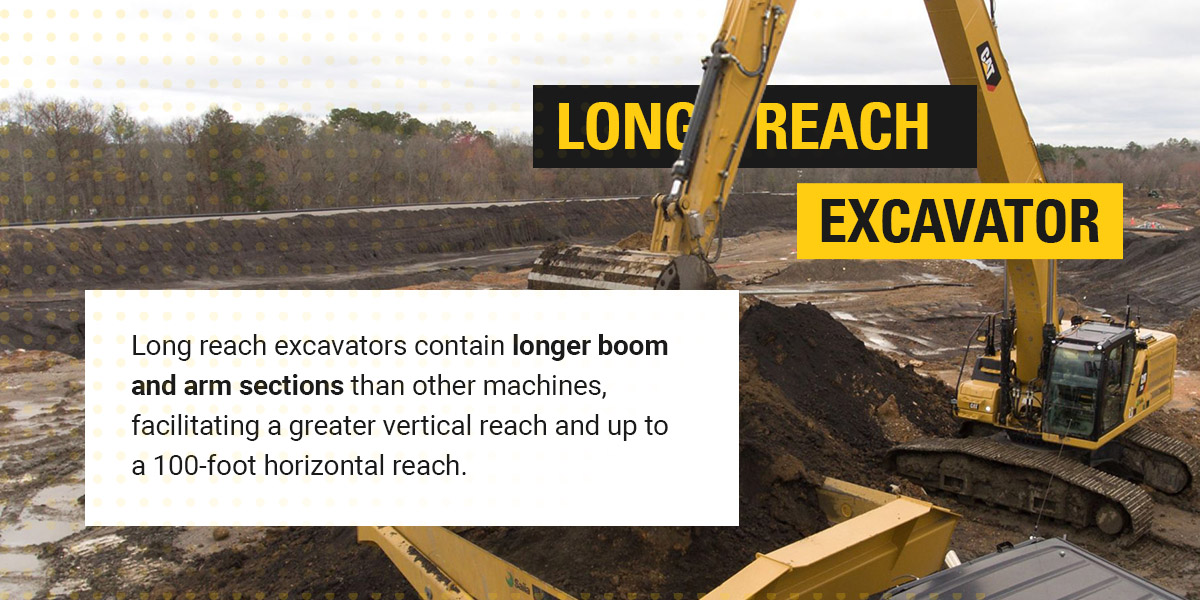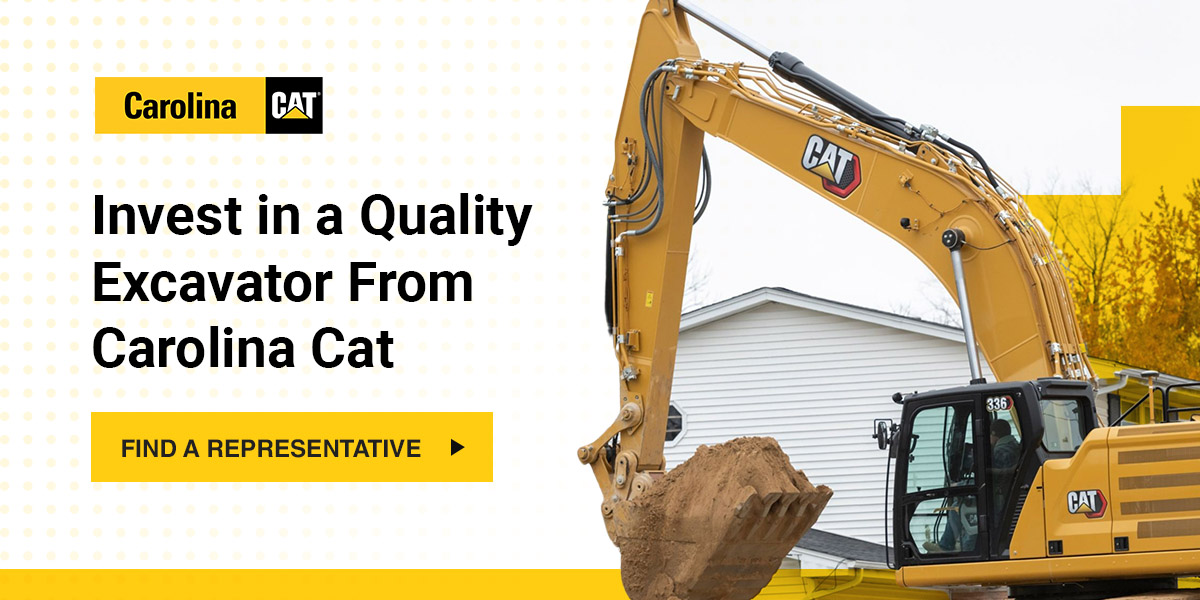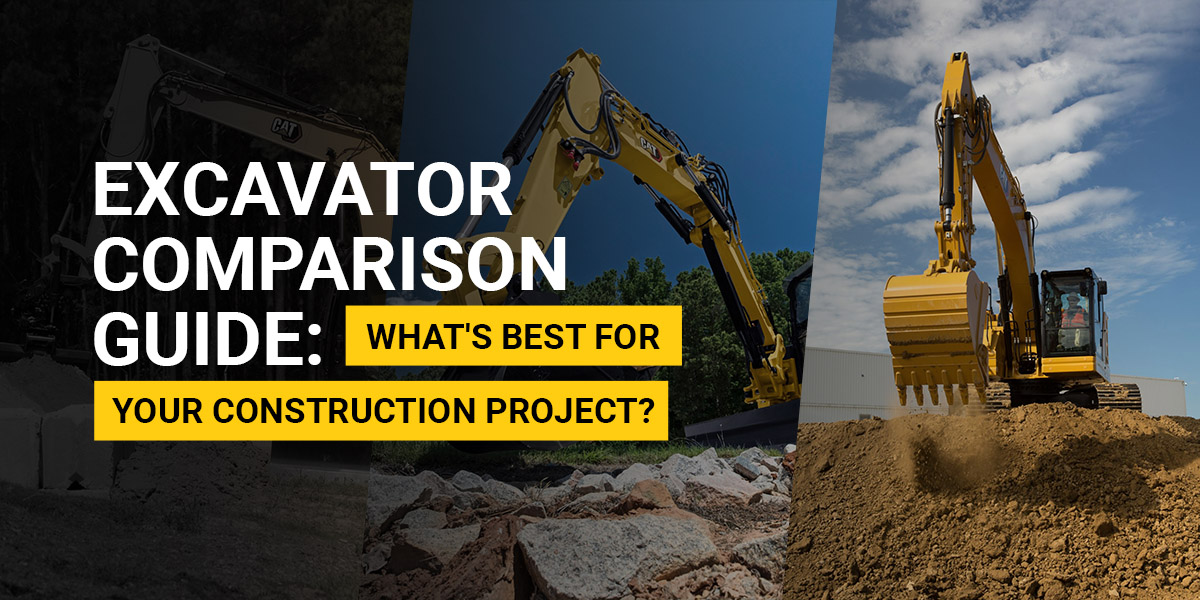
Need to find the right excavator for your next job, but don’t know where to start? All the different excavator types and sizes on the market can be a lot to remember…but don’t worry. We’ve got you covered!
In this guide, you’ll learn the different types of excavators on the market from the most common to excavators purpose-built for specific job types.
Here’s what to know and look for to make the best decision for your team.
How to Choose an Excavator: Factors to Consider
An excavator’s size and maximum operating weight matter, because a machine too light can reduce performance or pose a safety risk, while excavators that are too heavy can potentially damage a site.
Always factor in must-have specifications based on the worksite conditions you expect. In addition to a machine’s size, you should consider the following factors when choosing an excavator:
- Lifting capacity: Lifting capacity is important because it determines how safely you can transport different materials. Consider the type and total weight of materials you need to transport compared to an excavator’s specifications. The heavier the materials you transport, the heavier the lifting capacity your machine will need. Remember to include attachment weight, material weight and counterweights in your total calculations.
- Digging depth: Assess excavator digging depth requirements based on common depth profiles of previous projects. If you only occasionally require deep digging, it may be more cost effective to rent a machine.
- Reach length: Ensure your excavator can reach both the vertical and horizontal specifications of your most common projects. For example, demolition projects typically require long-reach boom configurations.
- Power: Some jobs require more power than others depending on what’s being moved. Consider an excavator with high pin and bore stroke specifications and a quality hydraulics system if you primarily perform heavy-duty jobs. An engine with a strong hydraulics system can help increase efficiency and reduce strain.
- Size: If your work areas typically contain narrow and hard-to-reach spaces, consider factor in width and size. It’s important to invest in an excavator that you can transport to your job sites and navigate easily.
- Cab safety and ergonomics: Keeping your workers safe and comfortable is essential, so you should choose an excavator that provides supportive seating, adequate visibility, and smooth controls.
- Cost: Investing in the right excavator can save you significant money on repair and replacement costs. While larger, more powerful machines even with higher upfront costs, may save money in unnecessary repairs if you frequently perform heavy-duty jobs.
With these specifications in mind, be sure to select the right type of excavator or mix of excavator types to suit your needs.
Types of Excavators on the Market
Most excavators fall into one of two types—wheeled and tracked. Some excavators are classified by their operational controls or the nature of their boom or arm.
Wheeled Excavator
A wheeled excavator is ideal for roadwork and urban excavation because operators can easily and quickly maneuver on flat surfaces like asphalt and concrete. Compared to crawlers that travel 4 to 6 miles per hour (mph), wheeled excavators can reach speeds of up to 20 mph.
While crawlers excel on uneven surfaces by distributing weight more evenly, you can make a wheeled excavator more stable in certain conditions by using outriggers. For a delicate job that requires keeping a well-manicured lawn in-tact, consider a wheeled excavator.
Crawler or Tracked Excavator
A crawler or tracked excavator operates on rubber or steel tracks; many excavators can be classified as crawlers regardless of size. You may need a crawler if you regularly lift heavy soil or debris using hydraulic-powered mechanisms on uneven terrain. While tracked excavators move slower than wheeled excavators, they provide the balance and stability you need for certain job sites.
Consider a crawler for heavy-duty construction, landscaping, or mining projects where terrain may be soft, muddy, steep, or uneven.
Demolition Excavator
A demolition excavator like the Cat® 340 Straight Boom is ideal for any demolition job due to its auxiliary hydraulic options. Features like smart mode on the 340 can improve fuel efficiency up to 15% by idling down in cases where hydraulic power isn’t needed.
Demolition excavators also contain deluxe cabs for added protection, comfort, and safely; some can even tilt up to 30 degrees for added comfort during demolition tasks.
Long Reach Excavator
A long reach excavator is ideal for industrial demolition jobs and heavy-duty digging. They work well for breaking or crumbling walls, and they are the best option if you need to demolish a structure near a body of water. Long reach excavators are essentially tracked excavators characterized by longer boom and arm sections that provide up to 100 feet of horizontal reach.
Excavator Sizes
To help you determine what excavator you need based for your job, review our excavator size comparison chart.
| Size | Image | Cat® Models | Weight | Benefits | Ideal Applications |
|---|---|---|---|---|---|
| SizeMini/Micro | Image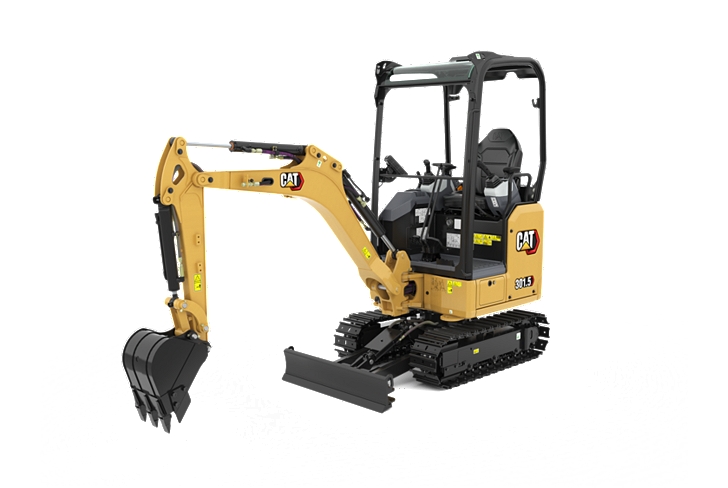 |
Cat® Models300.9 – 310 | WeightUp to 22,451 pounds | BenefitsMobility, maneuverability and fuel efficiency | Ideal ApplicationsJobs in confined or tight spaces |
| SizeSmall | Image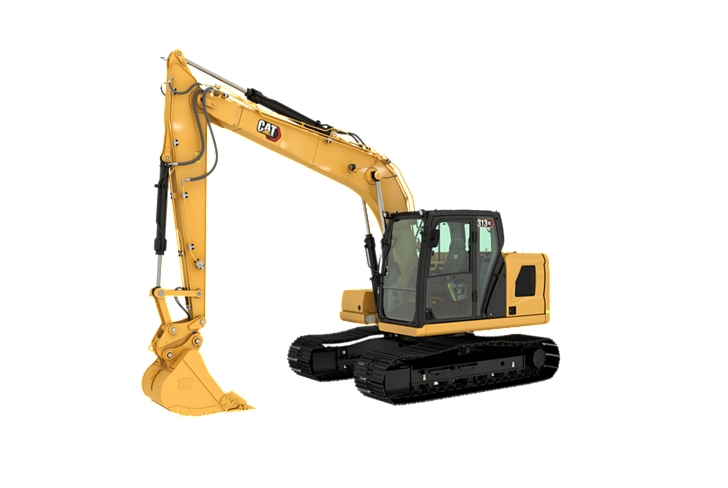 |
Cat® Models313 GC – 317 GC | WeightUp to 38,000 pounds | BenefitsMobility, maneuverability, fuel efficiency and the ability to handle more weight than a mini excavator | Ideal ApplicationsJobs in confined or tight spaces requiring more power and weight capacity than a mini excavator |
| SizeMedium | Image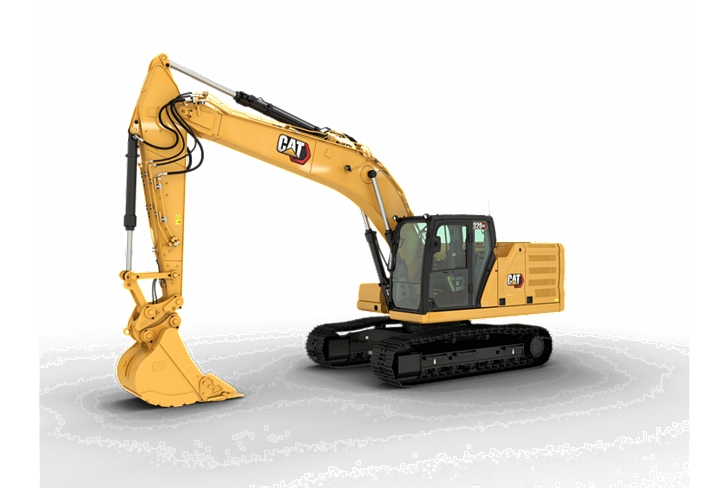 |
Cat® Models320 GC – 335 GC | WeightUp to 77,000 pounds | BenefitsManeuverability, fuel efficiency, and simple maintenance | Ideal ApplicationsJobs requiring more power, higher reach or deeper digging than a small excavator |
| SizeLarge | Image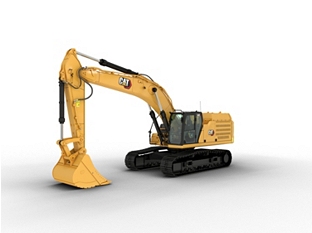 |
Cat® Models336 – 395 | WeightUp to 207,400 pounds | BenefitsPower, speed, versatility, and fuel efficiency | Ideal ApplicationsPower, speed, versatility, and fuel efficiency |
| SizeDemolition | Image |
Cat® Models340 – 352 Straight Boom, 340 – 352 UHD | WeightUp to 143,000 pounds | BenefitsVersatile, easy to switch out booms and sticks | Ideal ApplicationsDemolition jobs requiring extended reach up to 8 or 9 story buildings |
Invest in a Quality Excavator From Carolina Cat
Ready to get started? Request a quote and we’ll help you find the right excavator for your task or larger project. Carolina Cat offers a wide selection of new and used equipment to meet your needs.
High-quality Cat® excavators provide the power and versatility you need to complete projects properly and help you save money on maintenance costs.
Whether you need a brand-new, rental, or used excavator, we’ll help you find what you need for your budget and needs.
